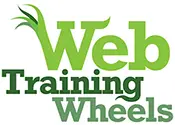Intermediate
Intermediate tutorials may include code modifications, or use of tools like FTP. If you’re not a full-on developer, but you’re also not scared of getting your hands dirty, these tutorials are good for you :)
This is the first post in a series that looks at the state of WordPress plugins for customizing your WooCommerce store.
Here I look at WooBuilder Blocks which is a great choice for owners of small stores that want to handcraft their product pages.
Read more →
I’ve been working in customer support for a premium caching plugin (WP Rocket) for several years now. I’ve seen a lot of websites and helped a lot of customers. Every day, many times a day, in our ticket queue, we receive some version of this question:
“Why isn’t my site faster?”
Depending on the site there may be many answers to this question. However the answer is almost never anything to do with caching.
A caching plugin, nor any one optimization technique can fix all performance issues. In fact, as site owners we can be our own worst enemy when it comes to speed, due to all the content we’ve put on our pages.
Read more →
I’ve updated this guide based on the recent changes to the PageSpeed tool.
Listen, let’s keep it real, PageSpeed Insights is a tool best used by developers. Its intentions are good but it’s not targeted at the average WordPress site owner. Even with the recent introduction of some WordPress-specific messaging, many aspects of the report are too technical to be clearly actionable.
In this guide I’ll try to translate what PageSpeed is talking about and let you know which factors you can control, as a WordPress site owner, and which you can’t.
The basic message of PageSpeed Insights could be translated as follows:
- Keep your pages light and simple.
- Avoid unnecessary fanciness.
- Consider mobile users, particularly those who pay for every byte of data.
Read more →
Without boring the pants off you, HTTP/2 is an updated and more efficient way of delivering web site components from server to browser. There are 3 conditions:
- Browsers have to support it – most of them do now.
- Servers have to support it. Many do, ask your host about it. If they don’t, using Cloudflare will enable HTTP/2
- Your site has to use HTTPS
Now that it’s becoming increasingly widespread, most articles on the topic make sweeping promises of faster performance, “just like that”, simply by enabling it. But there are fewer articles which actually back up these claims with test results.
I recently converted a couple of sites from HTTP to HTTPS and decided to take the opportunity to see what difference, if any, enabling HTTP/2 made.
Read more →
Trying to make your WordPress site faster is an already technically complex process, further obscured by all the jargon you have to understand. Here’s an overview of some commonly used site “speed up” terms. I hope it helps demystify the process!
Browser caching
Imagine your web page is like a puzzle. The puzzle pieces are CSS, JavaScript and image files. When you visit a web page, the browser has to retrieve all those puzzle pieces from the server, then assemble them correctly to make your web page.
Browser caching allows the browser to keep some of those puzzle pieces in place, that is, stored in the browser itself (on your computer), so that the next time you visit that page, it doesn’t have to fetch them again from the server.
The purpose of browser caching is to make repeat visits to the same site much faster for the visitor.
Read more →
Not all WordPress themes provide a way to have totally different sidebar content on different pages of your site. Some may provide a little flexibility with, for example a sidebar for the blog and a different sidebar for static pages, but sometimes you need more comprehensive control. You may need an additional set of navigation on a certain set of sub-pages, or you may want to hide some widgets on mobile devices, or for other specific conditions.
There are several different plugins that help you gain this type of flexibility with your site.
Read more →






